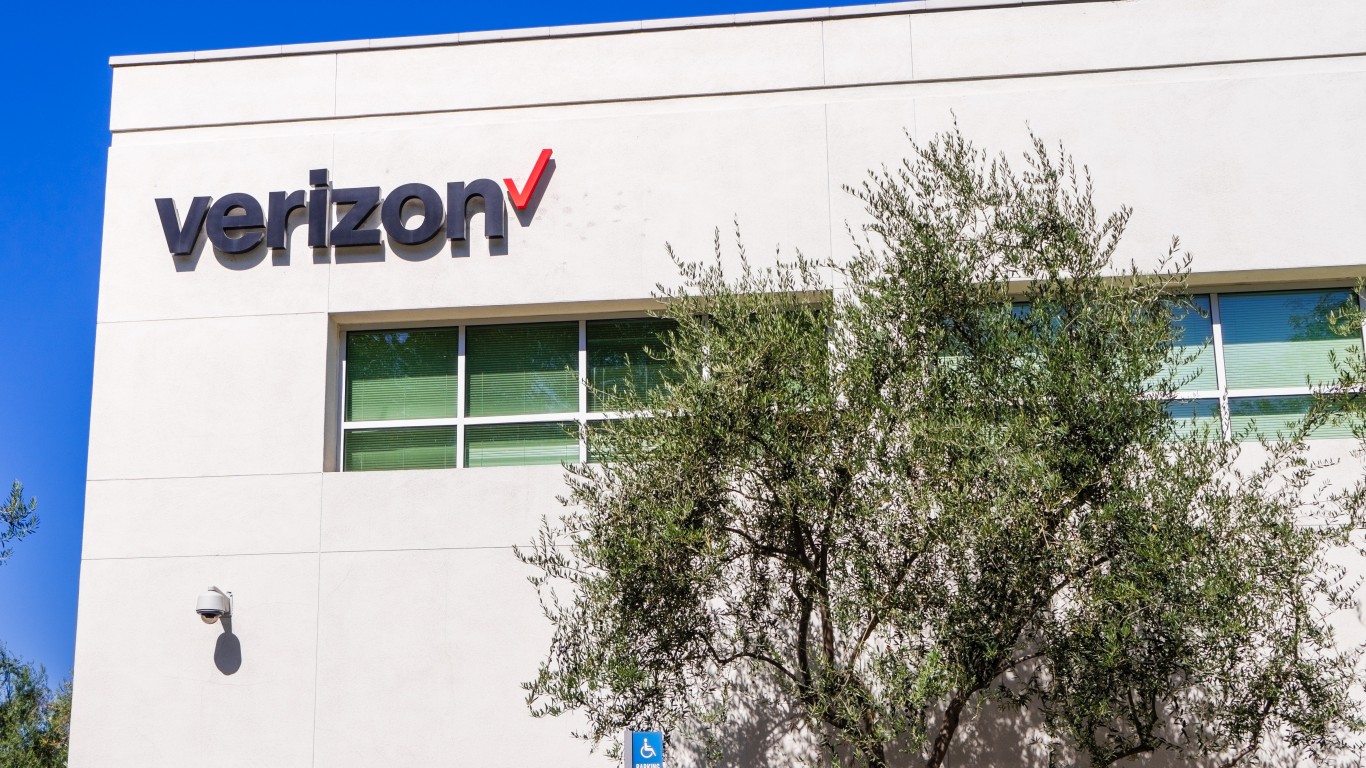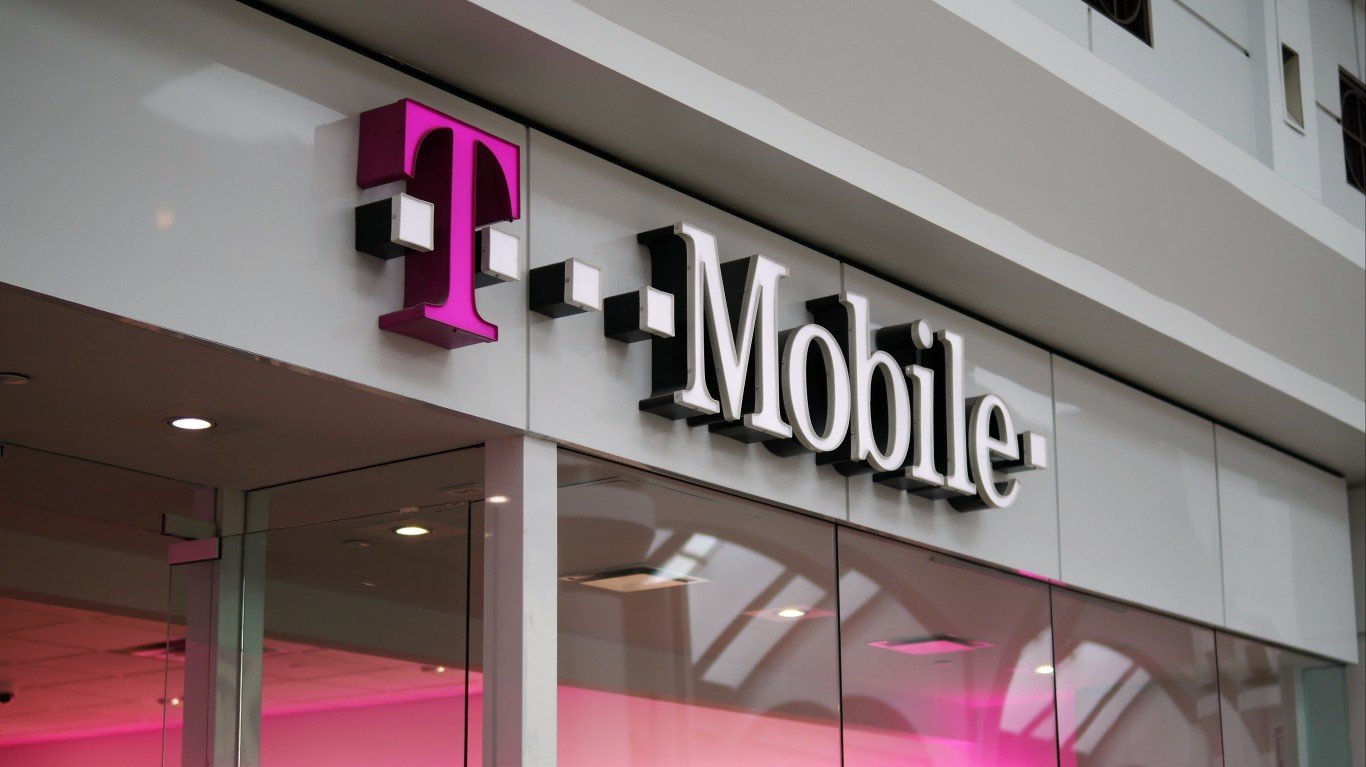

This theme may not be new, but the coming 5G network revolution is ever more of a reality each month. Unlike some trends of the past, this is going to take years of investments and may offer some companies clear revenue and earnings visibility for years. The benefit of targeting 5G is that investors don’t have to think of “just China” because this opportunity will span the United States, North America, Europe and Asia.
The big build-outs from AT&T Inc. (NYSE: T) and Verizon Communications Inc. (NYSE: VZ) are known to be in the tens of billions of dollars. Another boost here is that the T-Mobile US Inc. (NASDAQ: TMUS) acquisition of Sprint Corp. (NYSE: S), if it is ever allowed to close, has many stipulations for creating a better network that has have 5G written all over it.
The 5G race is really the fifth generation of high-speed networks, and there is still an ongoing debate about whether 5G will be fast enough to live up to its hype. If not, the 5G argument will move to “beyond 5G” and will encompass smaller and larger cells used in the networks to encompass smartphones, other wireless devices and the Internet of Things. The launches made already will continue to see many improvements, and there are many more cities and neighborhoods that are in high need of faster access.
24/7 Wall St. has tracked the would-be winners in the 5G race for some time. Some of these winners have suffered after earnings and guidance, due to woes from the ongoing trade war with China or to currency woes hurting the bottom line. Yet, the trade war issues will pass one day and the 5G build-out here in the United States is still in its very early stages.
There are six identifiable winners in this review, but the reality is that there are many moving parts, and many other players have the potential to score as much or more from the coming 5G wave.
Ciena: Margin Pressure May Be Overrated
Ciena Corp. (NASDAQ: CIEN) was trading like a big loser, with a 7% drop to $38.31 on Thursday, after having been up almost 10% at one point. The issue wasn’t earnings, as this was the fifth consecutive “beat” against estimates, but on margin guidance ahead. Gross margin is projected to be 42.0% to 43.0% rather than 44.5% to 45.0% that was expected. Ciena also did not commit to the mid-40s percentage range on margins either. Ciena did give revenue guidance of $945 million to $975 million, better than the $956 million that was expected. This drop was an unusual one for Ciena, and while big declines often are followed by additional weakness in the days and weeks ahead, the guidance may not be a figure set in stone — it may have been a sandbagged number.
Nomura/Instinet has a Buy rating and a $52 target price on the shares, and the firm sees Ciena ending its year strongly as both its revenue and earnings guidance were singled out as appearing overly cautious. If Ciena can get its margins back up, which Nomura thinks is likely in 2020, each percentage point gain in operating margin adds roughly $0.20 to the annual earnings per share.
Cisco: Beyond China and Emerging Markets
Cisco Systems Inc. (NASDAQ: CSCO) is another company that will win in the 5G build-out, and it has been continually migrating to a services and software subscription model from its old glory-days when it just sold the communications infrastructure equipment. Cisco stock took an unusual dive in August, falling from $50.61 to $46.25 a share overnight, when it disclosed on its earnings call that it was effectively ineligible to bid on new Chinese business (Huawei retaliation). Cisco shares were last seen down about 20% from its highs ahead of a fresh rally in the market, and the consensus target price of $58.91 is still above Cisco’s 52-week high.
After the Cisco post-earnings drop, Merrill Lynch reiterated its Buy rating and $62 price objective. The firm specified that it remained positive on Cisco’s robust campus switching demand and said that the 5G upgrade cycle could reverse some of the weakness in the shares. The firm sees its service provider trends improving once carriers are allocated spectrum and start deploying their 5G networks, and it said that Cisco’s orders were up 13% in the public sector and up 7% in the commercial segment. Almost all the weakness was attributed to China and other key emerging market softness.
Nokia and Ericsson: The European 5G Hometown Advantage
Nokia Corp. (NYSE: NOK) has been a disappointment to investors for years now. Being the amalgamated Alcatel, Lucent and Nokia gives this company a deep opportunity throughout the entire western hemisphere as nations look to stay away from Huawei in their infrastructure. A recent U.S.-Poland security declaration has put more pressure on Huawei/ZTE 5G equipment and added greater security scrutiny that may just be that much more of a win for Nokia. Merrill Lynch puts the 5G opportunity at $12 billion annually in calendar year 2020 for Europe alone.
The same opportunities for Nokia had offered a floor for Ericsson, or Telefonaktiebolaget LM Ericsson (NASDAQ: ERIC), in Europe and the western hemisphere. That said, Ericsson’s American depositary shares have dropped handily after peaking at $10.46 in April and then riding the “sell in May” wave lower and lower since. Those shares were last seen at $7.95, and most of the analysts who see upside (consensus was last seen at $10.56, above its 52-week high) also see the sell-off as having been way too overdone to the downside.
With Europe’s 5G network presenting close to a $12 billion opportunity in 2020 alone, and with Huawei/ZTE having a much harder time getting new business in Europe, the potential wins for the two companies are significant as both are based in the European Union. Ericsson’s revenues of $24.3 billion last year and Nokia’s revenues of $26.7 billion leave a lot of room for upside for the “hometown team” to win business.
Qualcomm: Beyond Just Worrying About Apple
Qualcomm Inc. (NASDAQ: QCOM) continues to have significant wins from 5G. After all, ever faster connections are going to require ever better processors for smartphones, where Qualcomm has a substantial premium to rivals. The big overhang remains how Apple and Qualcomm will treat each other in the future. Apple would love to go entirely around using the premium Qualcomm chipsets and antitrust issues, suits and settlements that frankly are hard to predict how they will turn out in future years. That said, a new iPhone refresh cycle, and an iPhone professional version, offer Qualcomm significant business ahead, on top of all the other devices outside of Apple products that can bring future connectivity to 5G. Qualcomm comes with caveats, but the history of the company and its aim to diversify would indicate that Qualcomm won’t sit on the sidelines on the 5G opportunities in the coming years.
A wave of analyst upgrades in April was followed by one of analyst downgrades over the summer, which keeps Qualcomm’s share price in limbo at the current time. With shares close to $79, it is effectively right at its consensus analyst target from Refinitiv, and its shares are still actually closer to the highs of a longer-term band as the 52-week range is $49.10 to $90.34. Some Wall Street analysts had called for Qualcomm to rise to over $100, and the official street-high target price listed is the Raymond James $115 target.
CommScope: Hail Mary, Arris, Ruckus and All
A smaller wild-card would-be winner in 5G is CommScope Holding Co. Inc. (NASDAQ: COMM). This is more financially leveraged now that it has paid up aggressively to acquire Arris in a deal that initially had been touted as a $7.4 billion transformation. The Carlyle Group even threw its hat back into CommScope ring as a part of the deal. The stock was last seen trading near $11 a share, with a mere $2.15 billion market cap, but the $10.3 billion in long-term debt is acting as a cap on the stock even valued at only five times expected earnings. CommScope has gone beyond many of the 5G ambitions, with its 8.5 gigabits per second broadband network targeting speeds of 10 gigabits per second.
Credit Suisse has remained the most bullish of the large firms on the combined CommScope/Arris deal. Yet it has ratcheted its price targets lower ($27 on last look), and that target may have to be “rationalized” (lower) yet again as earnings disappointed and as a stock at $11 with a leveraged balance sheet may not be able to rise more than 150% all that easily. That said, the Refinitiv consensus target is $19.29, but the 52-week trading range of $9.52 to $31.38 tells how the story has played out for investors in 2019.
Take This Retirement Quiz To Get Matched With An Advisor Now (Sponsored)
Are you ready for retirement? Planning for retirement can be overwhelming, that’s why it could be a good idea to speak to a fiduciary financial advisor about your goals today.
Start by taking this retirement quiz right here from SmartAsset that will match you with up to 3 financial advisors that serve your area and beyond in 5 minutes. Smart Asset is now matching over 50,000 people a month.
Click here now to get started.
Thank you for reading! Have some feedback for us?
Contact the 24/7 Wall St. editorial team.
 24/7 Wall St.
24/7 Wall St.


